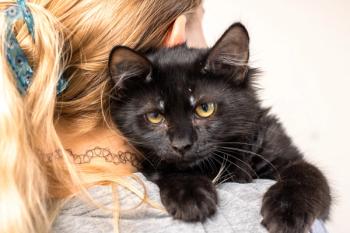
Mercury in Dog and Cat Foods: Cause for Concern?
In a recent study, authors assessed mercury concentrations in 101 wet and dry dog and cat foods.
In a recent study published in
Mercury, a well-known toxicant, is a serious threat to human and animal health. For humans and animals,
Minimata disease has also affected cats. In 1977, a
Due to the fact that mercury is such a danger to human and animal health, the Environmental Protection Agency and World Health Organization established consumption advisories to limit mercury consumption in humans (300—1000 ng/g). Consumption advisories are also available for other
Authors tested 101 wet and dry dog and cat food products (cat, n= 47; dog, n= 54), taking three samples from each product. Samples were taken from different areas of each package or container of food. Samples were then placed into clean vials, weighed, and frozen at -23o C overnight. Following overnight storage, samples were freeze-dried, reweighed, and again, placed in freezer storage.
Authors used a Milestone Direct Hg Analyzer 80 to test mercury concentrations in each sample. To ensure accurate mercury measurements in the food samples, authors first calibrated the machine by testing National Institute of Science and Technology standards using low (0.1—30 ng) and high (20–600 ng) calibration curves. For each food sample, authors first used the low calibration curve; food samples with mercury concentrations greater than 30 ng/g were tested again, this time using the high calibration curve.
To account for potential heterogeneity in the wet and dry food containers, authors analyzed mercury concentrations of two lots of several different food types from different food brands.
The mercury consumption limit for river otters, 100 ng/g, was used to determine mercury concerns for dogs and cats, because, as authors noted, “the river otter is a mammal, has a more similar energy/food intake, and only eats fish.”
The mean mercury concentration in the sampled foods was 43 ng/g (range, 1—604 ng/g). Of the 101 food samples, 14 had mercury concentrations above 100 ng/g; fish was the first ingredient in each of these foods. Authors observed the highest mercury concentrations in samples of Fussie Cat Tuna with Prawns.
Mercury concentrations were higher in cat foods than dog foods, with nine wet cat food brands containing greater than 100 ng/g of mercury. Among the dog foods, three dry foods and two wet foods had mercury concentrations above 30 ng/g; three dry foods contained fish (unspecified type) and the two wet foods contained salmon.
Interestingly, food samples containing salmon or trout had high mercury concentrations. For
Given the study results, authors suggested mercury concentrations are not of concern in dog foods, and are of minor concern in wet cat foods. Authors advised that, “Given the lack of objective toxicological data for cats, these data should be used conservatively and cautiously with respect to discussing health impacts.”
Dr. JoAnna Pendergrass received her doctorate in veterinary medicine from the Virginia-Maryland College of Veterinary Medicine. Following veterinary school, she completed a postdoctoral fellowship at Emory University’s Yerkes National Primate Research Center. Dr. Pendergrass is the founder and owner of JPen Communications, LLC.
Newsletter
From exam room tips to practice management insights, get trusted veterinary news delivered straight to your inbox—subscribe to dvm360.





